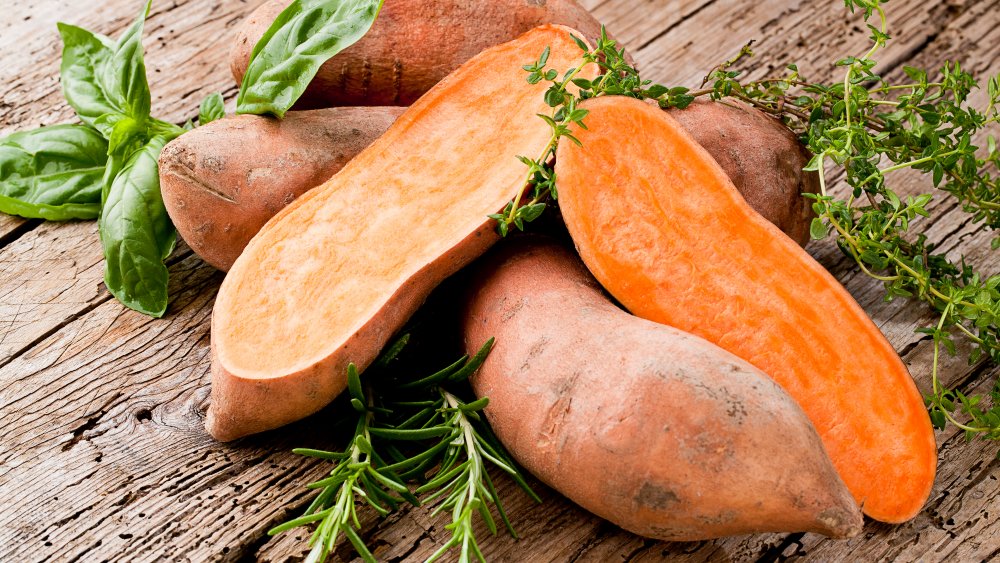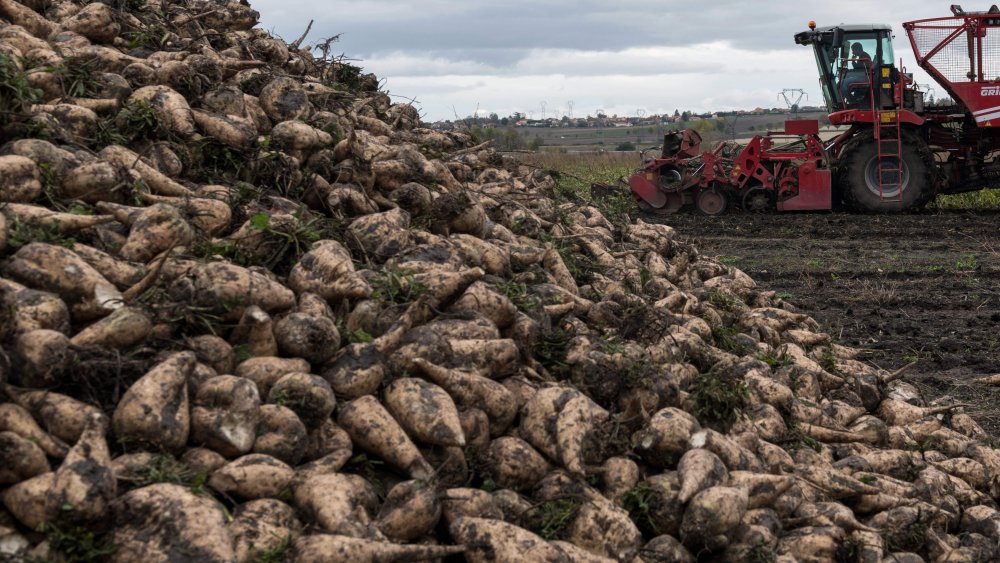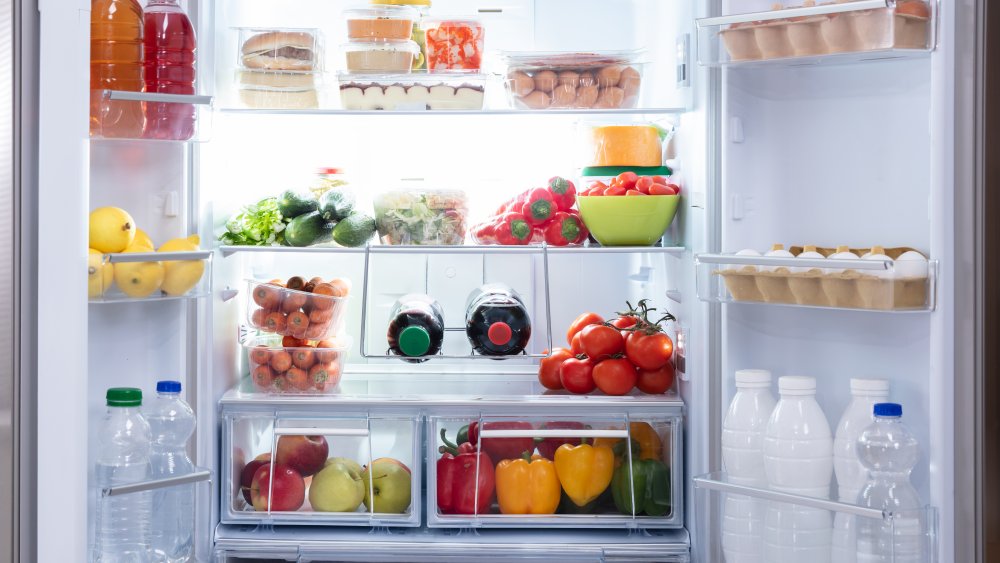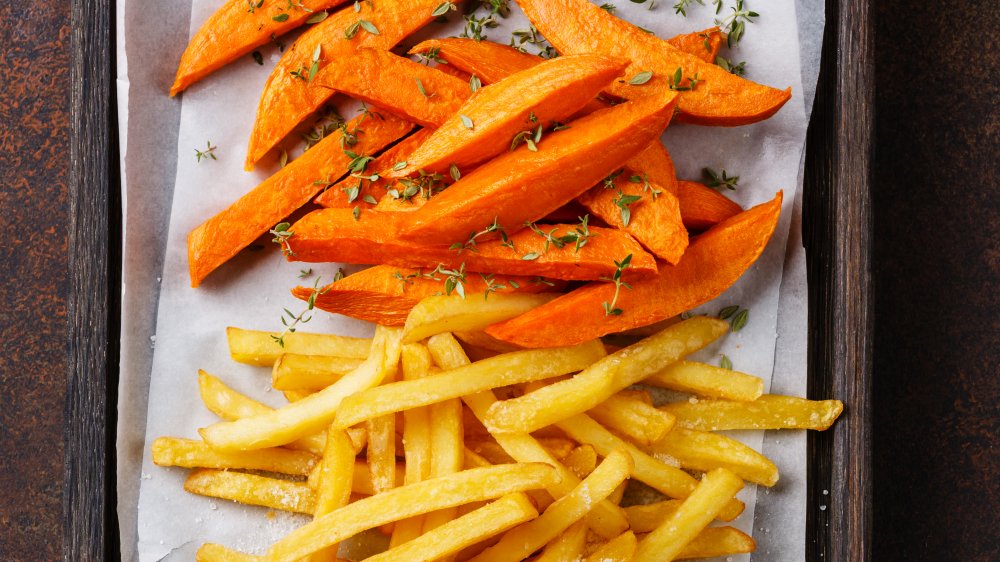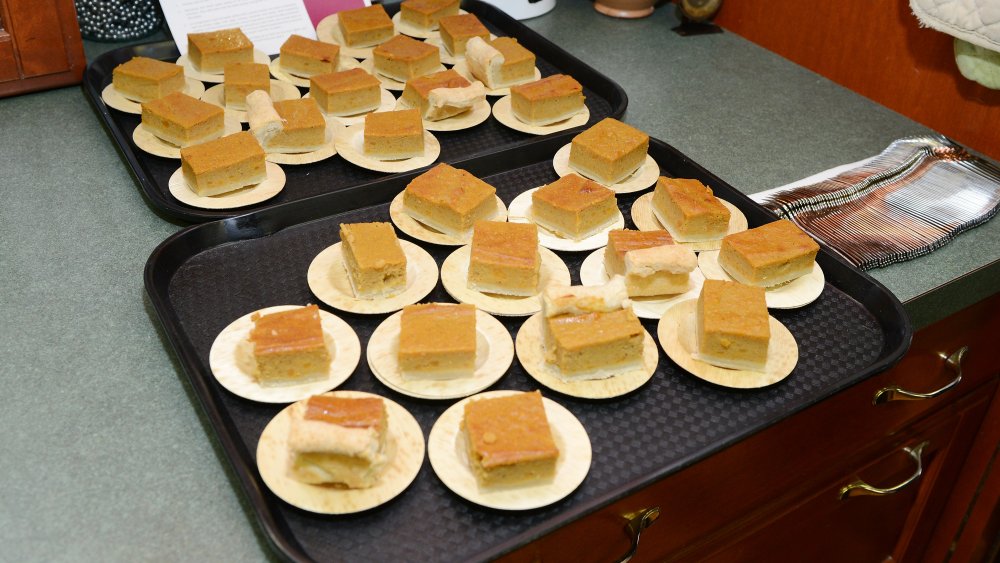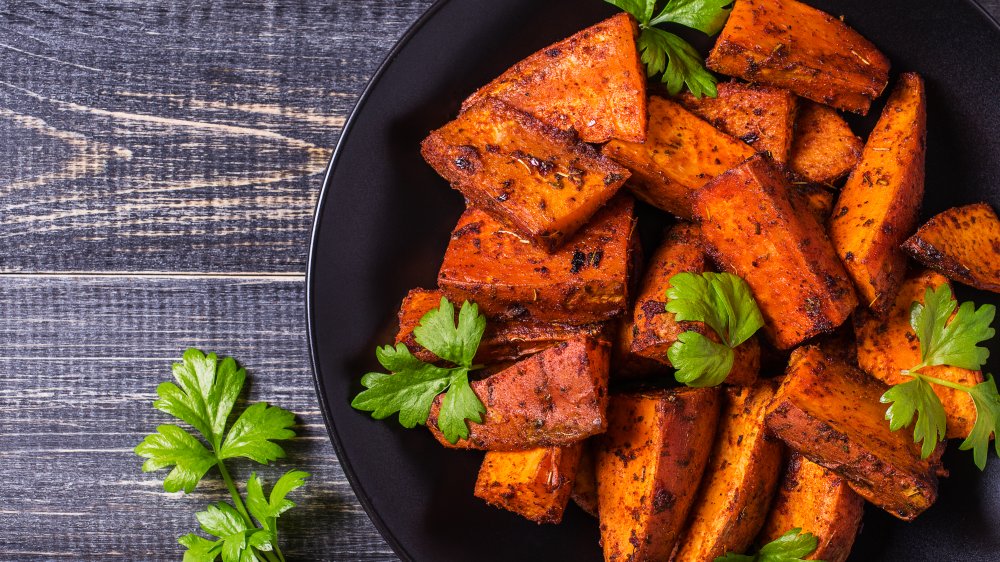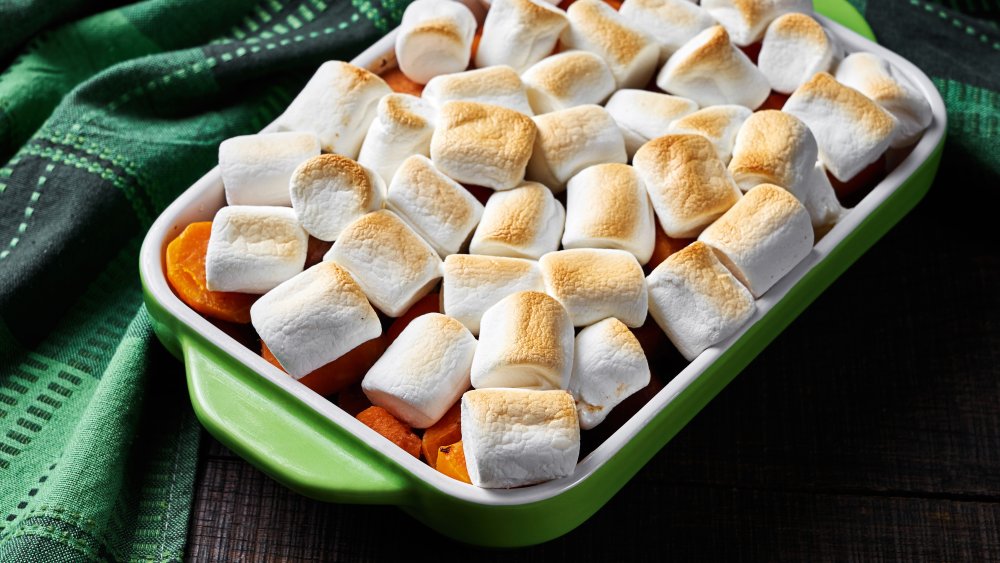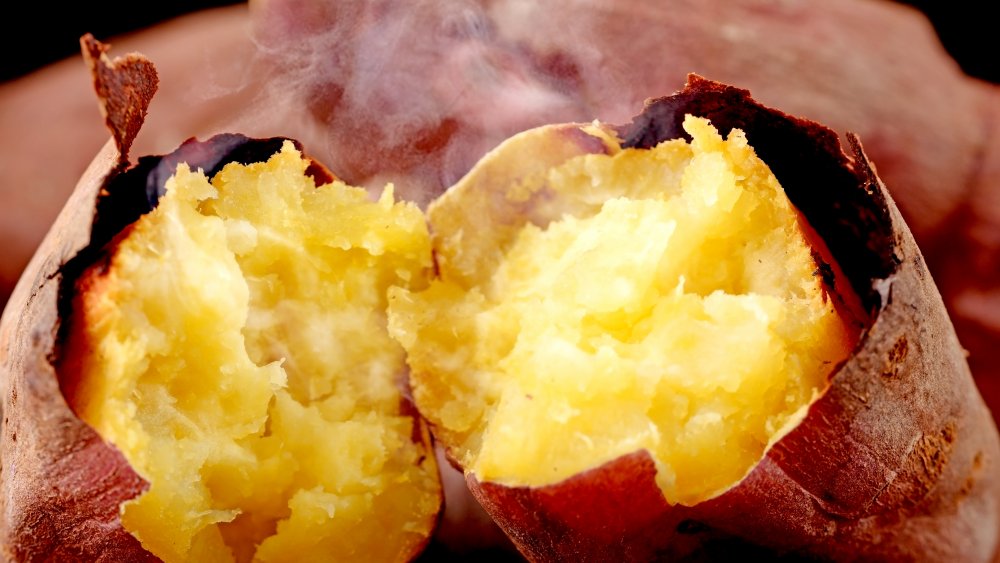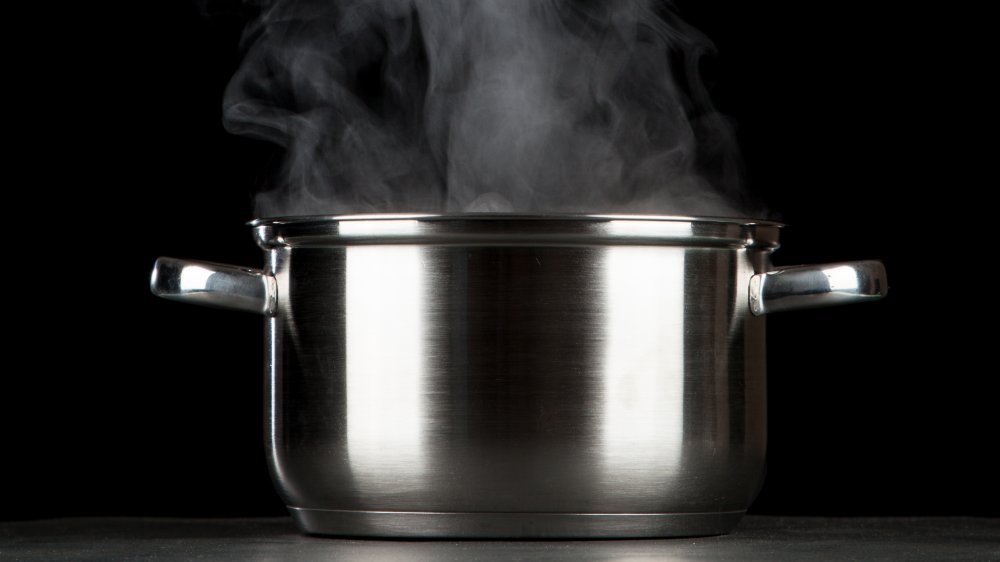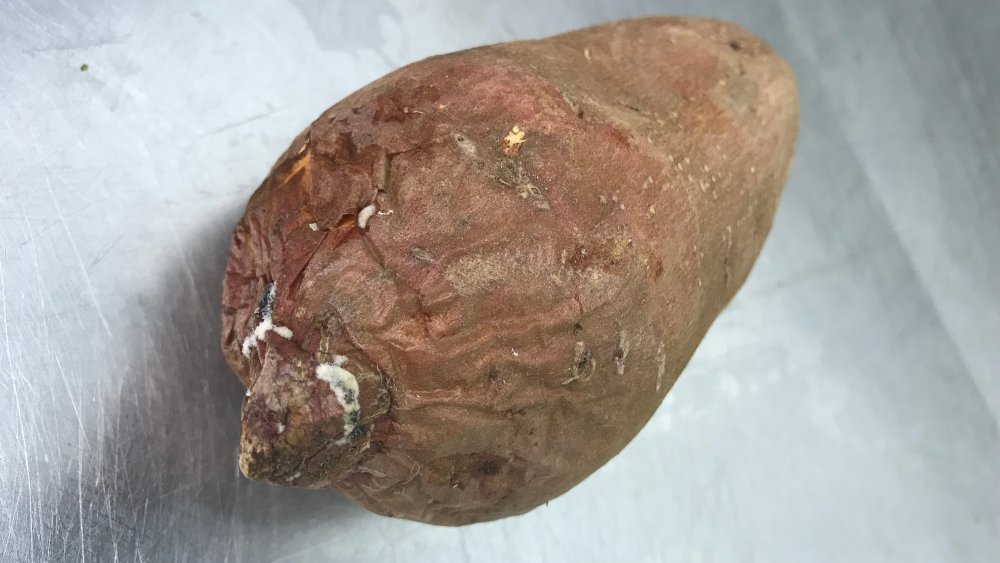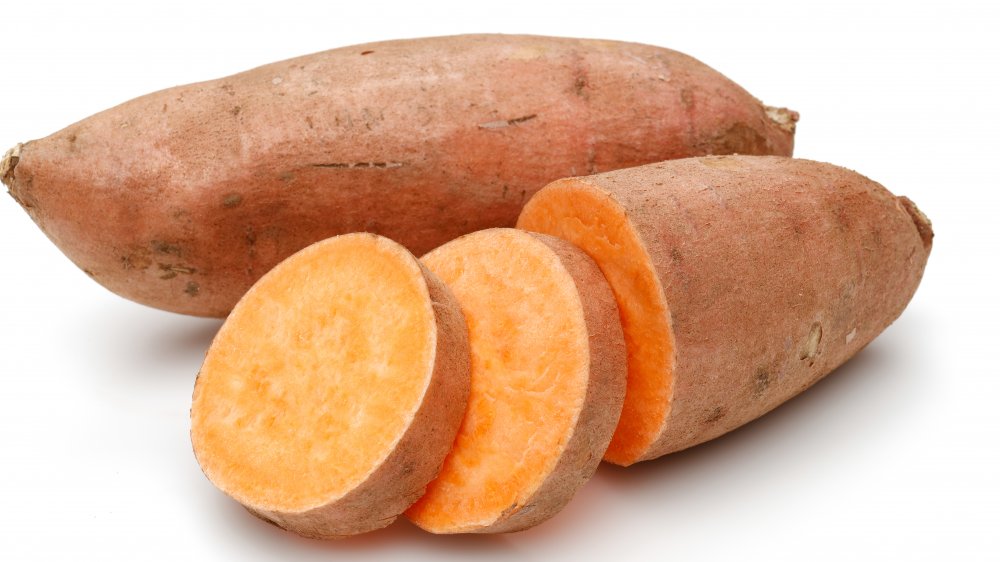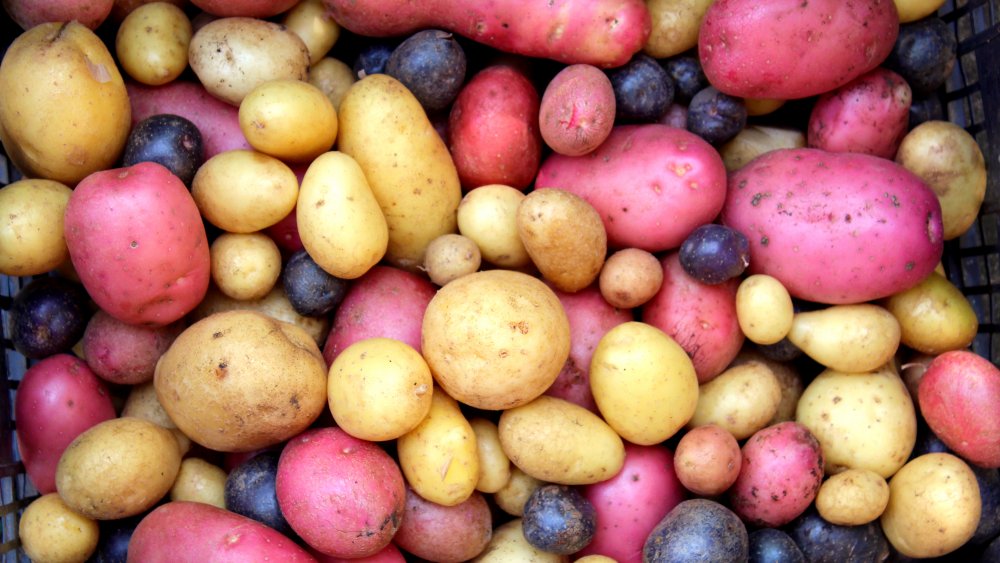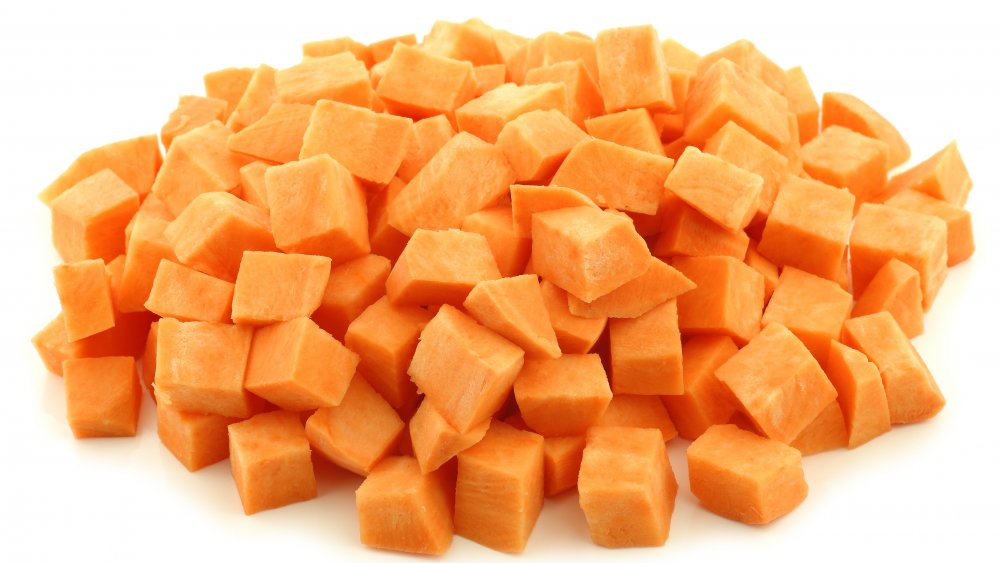Mistakes You're Making When You Cook Sweet Potatoes
Sweet potatoes seem to be one of those polarizing food items — people either love them or they hate them, but it's hard to find someone whose tastes are ambivalent toward the good old sweet potato.
Now, if you're a sweet potato hater, chances are you just haven't had a well-cooked one. Perhaps you've been trying to use them as a healthier substitute for regular potatoes, without taking into account the vastly different chemical structures and flavor profiles of the two veggies. Or maybe you're haunted by memories of that grotesque, soggy sweet potato casserole that your aunt brought to Thanksgiving dinner every single year.
When cooked properly, as the sweet potato lovers already know, a sweet potato can have a truly divine flavor. With a characteristically creamy interior and a nuanced, delicate sweetness, the sweet potato is the perfect base for both savory meals and mouthwatering desserts — not a lot of other veggies can say that!
Whether you eat sweet potatoes on the daily or can't stand the sight of them, read on — you just might learn a thing or two about how to cook them the right way (or if you're already making sweet potatoes that you love, you might learn how to make them even better).
Here are some of the top mistakes home chefs make when they're cooking sweet potatoes.
Forgetting to scrub your sweet potatoes
Just like regular potatoes, sweet potatoes are tubers — since the sweet potato is actually the starchy, fibrous root of a plant, it grows underground, covered in dirt and soil. While farmers and distributors do their best to get each sweet potato cleaned up and tidied before they get to grocery stores and farmers markets, most of the sweet potatoes you buy are likely to have some residual dirt still on the skin.
On top of dirt, your sweet potatoes could have pesticides and other unsavory pieces of debris on their skins. While it's easy to get lazy and assume that your sweet potatoes have been well-cleaned already, you should really be scrubbing them thoroughly with a vegetable brush and some warm water before you actually start cooking or cutting into them. Even if you're not planning on eating the skin of your sweet potato, it's a good idea to give them a good cleaning before you peel them, since dirt and debris from the skin could come into contact with the flesh of your sweet potato during the peeling and cutting process.
Sure, it adds another step to the whole cooking process, but do you really want your meal to be ruined when you bite into a dirt-covered sweet potato? Simply get out those sponges and start scrubbing.
Storing sweet potatoes in the refrigerator
Sweet potatoes are an extremely hardy and durable vegetable; as a result, it takes a really long time for them to go bad. Under just the right conditions, root vegetables can last notoriously long, and sweet potatoes are no exception — but it's important to note that the right conditions are absolutely necessary. Sweet potatoes need to be in a dry, somewhat cool (but not too cool!) environment — room temperature is perfect for these vegetables.
Basements and cellars are ideal, but your kitchen pantry is likely a good spot for them, as well. The fridge? Not so much. According to the North Carolina Sweet Potato Commission, putting sweet potatoes in the fridge can yield a hard center — and may negatively effect the taste. Additionally, you may find that refrigerated sweet potatoes get a bit dry and shriveled.
Unlike other root vegetables that can last an entire season or more, sweet potatoes will only last you around a month in the pantry. Still, that's a much longer shelf life than most other non-root vegetables.
Using different varieties of sweet potatoes interchangeably
From your traditional orange sweet potatoes to speckled white and purple ones, there are a lot of different sweet potato varieties to choose from. And just like you might find that Yukon gold potatoes are better for mashed potatoes than, say, Russet potatoes, there's a right way to use the different kinds of sweet potatoes you'll find on the market.
According to the Huffington Post, there are two main types of sweet potatoes grown and sold in North America: one with golden skin and white flesh, and another with copper skin and orange flesh, the latter being the one you probably envision when you think about sweet potatoes. But on top of those two predominant sweet potatoes, you'll also find plenty of other types, such as Japanese purple sweet potatoes and Hayman sweet potatoes, which have a yellow-green flesh.
Now, they all have the same basic flavor — but they can have vastly different structural characteristics, meaning that they'll each hold up to different cooking methods differently. White variants tend to have a texture that's sort of in between the firm Russet potato and the creamy orange sweet potatoes — as a result, they crisp up much better than orange variants and are great for making sweet potato fries. On the other hand, if you're making a sweet potato casserole, the orange variants should be your go-to, as they have a richer and creamier consistency.
Only using sweet potatoes in savory meals
Sweet potatoes are great any time of the day — whether it's a sweet potato hash at breakfast time or roasted sweet potatoes at dinner, they're bound to make an incredible meal if you cook them right. But if you're limiting yourself to savory preparations of the sweet potato, you're missing out on so many amazing desserts that could be made with the starchy root vegetable — after all, it's in the name that they're sweet, so why not use that sugary, saccharine quality to your advantage?
We're not just talking sweet potato casserole either — yes, sweet potato casserole can be a delicious treat at Thanksgiving dinner, but there are also a huge number of more refined and nuanced sweet potato-based desserts that deserve more widespread appreciation. From the classic sweet potato pie to more off-the-wall recipes like sweet potato brownies, there are so many different ways to incorporate sweet potato into your dessert repertoire.
Since sweet potatoes are naturally quite sweet, they allow you to cut down the sugar content in your homemade desserts a bit while also adding a more complex, almost caramel-like sweetness that refined sugars just don't have.
Adding too much oil to roasted sweet potatoes
When you're making roasted sweet potatoes, you want to be careful about the amount of oil you're using to coat the potatoes. For the most part, less is better — olive oil adds a nice rich quality to the potatoes, but adding too much can make them soggy and will prevent them from crisping up quite right (you can even get away with not using any oil at all, especially if you're roasting a sweet potato whole).
With roasted sweet potatoes that have been cut into pieces, the oil is more about adding flavor to the potato — using a neutral oil for roasted sweet potatoes is fine, but to really maximize the flavor quality of your sweet potato, use one of your favorite olive oils or even a little bit of melted butter to boost the "wow"-factor. The oil helps them stay moist while allowing them to crisp up on the outside, and really ups the richness of the whole dish — add too much though, and you'll have a greasy, unpleasant mess on your plate.
If you're new to roasting sweet potato, stick to around one tablespoon of oil for one large sweet potato — you can always adjust and add a bit more for taste later, but you can't really reverse the effects of adding too much oil to the roasting pan.
Adding too much sugar to sweet potato casserole
Sweet potato casserole is a bizarrely unique American dish that's become a Thanksgiving staple for so many families — as Quartz reported in 2018, it's a "highly divisive concoction" that "appears on Americans' dining room tables for its annual cameo, to the delight of some and the disgust of others" every year come turkey season. But why's it so divisive? Well, for starters, it could be that sweet potatoes and marshmallows are just a really odd pairing.
But it's also probable that home chefs are simply making their sweet potato casserole a little bit too sweet. If you're adding heaps of sugar to your sweet potato casserole, you may be overdoing it a bit. Sweet potatoes are naturally sweet, so you shouldn't be adding huge amounts of sugar to your casserole, otherwise things will be overdone.
Since sweet potatoes have a nice, rich sweetness that's much more subtle and nuanced than sugar, adding lots more in the casserole will overpower that distinctive natural sweetness and dumb down the complex flavors of the dish.
Tossing out the skins from sweet potatoes
When it comes to eating sweet potatoes, it's no secret that the sweet, velvety interior is the main attraction. But that doesn't mean you should do away with the skins entirely. Certain preparations of sweet potato will call for peeling them, but there are plenty of other times where keeping the skin attached to the flesh will actually enhance the flavor and texture of your meal, while also providing a number of beneficial nutrients.
On the whole, unpeeled fruits and vegetables tend to have more vitamins, antioxidants, and fiber than their peeled counterparts — this is certainly true of sweet potatoes. Leaving the skins on will significantly increase the fiber content of your sweet potato, as well as supplying you with plenty of valuable minerals like potassium and magnesium — all of these are present in the flesh as well, but in marginal proportions.
For example, Live Strong says an unpeeled sweet potato contains around 475 milligrams potassium per 100 grams; peeled sweet potatoes only have about 230 milligrams per 100 grams, meaning that more than half the potassium is located in the skin. If you're eating sweet potato for their nutritional value, tossing out the skins is one of the biggest mistakes you can make, as a peeled sweet potato simply lacks the nutritional value of an unpeeled one.
Boiling sweet potatoes saps the nutrients
A lot of sweet potato aficionados love to tout the health benefits of eating sweet potatoes: with the skins left on, they're a great source of all sorts of vitamins and minerals, as we've mentioned above. The vitamins and nutrients in sweet potatoes may have the potential to fight off cancer, improve your vision, and increase your brain function, among plenty of other benefits — but that can all go to waste if you're not careful with the way you cook them.
For the most part, boiling your vegetables is one of the worst ways to cook them if you're trying to maximize the nutritional content. Plus, it leaves you with bland and mushy veggies, no matter the vegetable you're boiling. The same goes for sweet potatoes — when you boil or steam them, the water leaches out the nutrients present in the vegetables, which diminishes their nutritional value significantly, unless you're using the water you cooked them in for stock or stew. If you want to get the most bang for your buck nutrition-wise, it's recommended that you roast your sweet potatoes with their skins on and wrapped in foil so as to minimize nutrient loss during the cooking process.
On the bright side, boiling sweet potatoes also lowers their glycemic index, which Dr. Michael Greger says could be beneficial — speaking with SFGate, Dr. Greger said that this lowered glycemic index means you get less of an insulin spike after eating boiled or steamed sweet potatoes.
Buying blemished or bruised sweet potatoes
As with any food item that you buy from your local supermarket or farmers market, you'll want to carefully observe your sweet potatoes before plopping them into your shopping basket. While "ugly" sweet potatoes that are weirdly gnarled and strangely shaped are alright to purchase, avoid buying any sweet potatoes that appear to be bruised or have cuts and gouges that reveal some of the flesh.
Bruises and cuts can expose the flesh to bacteria which will speed up the process of spoilage — chances are, if a sweet potato has any of these blemishes at the point of purchase, they've already begun to go bad and will be even more unsavory by the time you decide to actually cook them.
During the shipping process, some sweet potatoes are bound to get bruised or cut up a little bit — this is just the nature of the way we transport produce from place to place, and there's not much we can do about it. But for every damaged sweet potato in your grocery store, you should be able to find plenty of unblemished and robust ones that are perfectly fresh and ready to cook up.
Using old sweet potatoes
While sweet potatoes can last an awful long time, if they're not kept in the right conditions, they can easily go bad — if you've had a sweet potato sitting in your kitchen for a week or two, you'll want to keep an eye on it and make sure there aren't any signs of your tuber beginning to go kaput. Before cooking your sweet potato, always give it a thorough inspection to make sure that it's as fresh as can be, so you don't have to worry about any of the health risks associated with eating spoiled food. It may have been gorgeous when you bought it — but they don't stay that way forever.
It's pretty easy to tell if your sweet potato's gone bad — you should be able to use your senses to tell if your sweet potato's not so sweet anymore. If the softness is limited to one spot on the sweet potato, it may be tempting to just cut off this region of the potato and cook the rest, but you should really toss the whole thing, as this means the flavor of the entire potato will be altered and it may not even be safe to eat.
Assuming sweet potatoes are significantly healthier than regular potatoes
Are you trying to eat healthier and thinking about ordering a side of sweet potato fries instead of those good ol' regular french fries next time you go out to lunch? Not so fast. Sweet potatoes have a reputation for being the healthier alternative to regular potatoes, when in actuality, the health benefits of choosing sweet potatoes over regular ones are not all that huge.
While sweet potatoes are definitely a healthier option, their nutritional content is only marginally better than white potatoes, and the cooking method used can vastly affect the nutritional content of the veggies as well. Sweet potatoes and potatoes have nearly identical caloric content, as well as the same amount of protein, fat, and carbohydrates. Nutrient-wise, sweet potatoes have a slight edge, but regular white potatoes actually have more potassium than sweet potatoes.
Not storing leftover raw sweet potato slices in water
Sweet potatoes can be big. It's possible won't want to cook an entire sweet potato in one sitting — if you've already chopped and sliced up an entire sweet potato and realize you don't actually needing to cook it all at once, you may find yourself wondering what to do with the rest.
Leaving cut-up pieces of sweet potato in the pantry is a recipe for quick spoilage — without the tough skin to protect the flesh, it will rapidly succumb to bacteria and mold if not stored correctly. But simply tossing them in a Tupperware container and putting them in the fridge will give them an unpleasant texture and flavor profile. On top of that, when the flesh is exposed to air, it dries out much more quickly than an untouched sweet potato, and you may find your slices and cubes shrivel up rapidly.
The solution? Toss your leftover cut sweet potato pieces in a container and cover them with water — adding water to the container will ensure that your sweet potato stays nice and moist without shriveling up before you can cook it.
